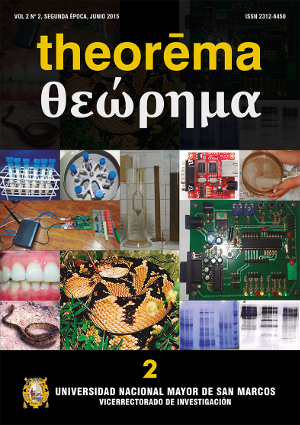Cadmium (II) and Lead (II) bioadsorption ability by using dead bacterial biomass in aqueous solutions
Keywords:
Biosorption, Cadmium, Lead, Bacterial dead biomass.Abstract
Annually our country exports higher quantities of metals and metallurgical products, that cause disturbance in ecosystems being mainly affected water resources.To solve this problem, biosorption process represents a promising alternative to remediate natural environments. The aim of this work was based on the evaluation of biosorption ability to Cd (II) and Pb (II) of the Serratia marcescens M8A-2T dead bacterial biomass. This strain reached maximum values of 16 000 mg / L and above 800 mg / L for CMI to Pb (II) and Cd (II) respectively, using plate cylinder method. Furthermore, in monometallic solutions were determined maximum biosorption efficiency of 99.89% and 61.32% for the metals Cd (II) and Pb (II) respectively at pH 9 and times of interaction between 15 and 120 minutes. These results let us conclude that the bacterial biomass can be used in remediation processes of environments contaminated by heavy metals.Downloads
Published
Issue
Section
License
Copyright (c) 2016 Cinthya Elena Ballardo De la Cruz, Fernando Abilio Merino Rafael, Susana Mónica Gutiérrez Moreno

This work is licensed under a Creative Commons Attribution-NonCommercial-ShareAlike 4.0 International License.

Theorema segunda época by Vicerrectorado de Investigación y Posgrado is licensed under a Creative Commons Reconocimiento-NoComercial-CompartirIgual 4.0 Internacional License.
Creado a partir de la obra en http://revistasinvestigacion.unmsm.edu.pe/index.php/Theo/index.
AUTHORS RETAIN THEIR RIGHTS:
a. Authors retain their trade mark rights and patent, and also on any process or procedure described in the article.
b. Authors retain their right to share, copy, distribute, perform and publicly communicate their article (eg, to place their article in an institutional repository or publish it in a book), with an acknowledgment of its initial publication in the Theorema segunda época.
c. Authors retain theirs right to make a subsequent publication of their work, to use the article or any part thereof (eg a compilation of his papers, lecture notes, thesis, or a book), always indicating the source of publication (the originator of the work, journal, volume, number and date).



